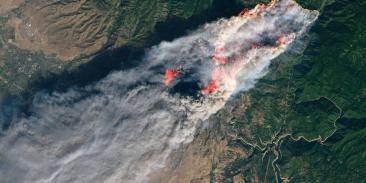Tar-Pamlico Pollution Reduction Program Up the Creek Without a Paddle
“While the Neuse has gotten all of the headlines, the Tar-Pamlico continues to suffer,” said Kristin Rowles, executive director of the PTRF. “Over the past Fourth of July weekend, the Tar-Pamlico experienced a widespread fish kill, causing boaters and swimmers to worry about exposure to dead and dying fish.”
Since the middle 1980’s, the same array of environmental problems now facing the Neuse have also occurred in the Pamlico: algal blooms, fish kills, crab and fish diseases. The toxic dinoflagellate, Pfiesteria, was first discovered there. The Tar-Pamlico experienced almost 3 and a half times as many fish kills as compared to the Neuse in the 11 years from 1985 to 1995 with higher rates of fish kills in 10 of those years. The Pamlico has been so severely degraded that the state’s director of the Division of Marine Fisheries in 1989 declared it “commercially dead.” The first phase of the Tar-Pamlico Nutrient Reduction Program was adopted by the EMC in 1989, as an agreement between government, dischargers and environmental groups. Unfortunately, three-way negotiations to design a comprehensive second phase never occurred, and environmental groups refused to sign on when it was announced in 1994. A nonpoint source reduction plan ? to address roughly 75% of nutrients coming largely from farms, with smaller contributions from the atmosphere and urban runoff ? was adopted by the EMC in 1995.
“We can’t just keep buying time and hoping the problem will go away,” said Rowles. “The State needs to respond with a real program, real resources, and real progress to clean up nonpoint source pollution in the Tar-Pamlico.” The draft report indicates that an estimated 41 additional positions combined with services, equipment and resources totaling $3.5 million will be required to set up the accounting system put in place by the current EMC plan. This estimate does not include the resources needed to actually implement agricultural and other activities required to reduce nonpoint source nutrient loading in the Tar-Pamlico Basin. “A political decision has been made against across-the-board nutrient reductions in favor of a resource-intensive accounting system approach,” said Rudek. “If there is to be any hope of success for the present plan, a lot of additional money must accompany the decision to use an accounting approach . An across-the-board approach, whether voluntary or mandatory, makes more sense given the large nutrient reductions needed in our coastal waterways.”
“We have worked diligently for years to begin fixing our river,” said Kristin Rowles, executive director of PTRF. “Together, we have achieved important reductions in pollution from point source discharges in the basin. We are outraged that the state has failed to commit the resources necessary to reduce nonpoint source pollution to acceptable levels. The cleanup of the Tar Pamlico demands the same attention given the Neuse.”
With more than 3 million members, Environmental Defense Fund creates transformational solutions to the most serious environmental problems. To do so, EDF links science, economics, law, and innovative private-sector partnerships to turn solutions into action. edf.org
Latest press releases
-
Groups File Lawsuit Challenging Trump EPA Final Rule That Delays Methane Pollution Protections from Oil and Gas Industry
December 4, 2025 -
New Statewide Survey: As Electricity Demand and Costs Skyrocket, Arizonans Support Building More Wind and Solar Energy
December 4, 2025 -
Trump Administration Announces Plan to Weaken Fuel Economy Standards for Cars and Trucks
December 3, 2025 -
Trump EPA Proposal Lowballs Risk of Cancer-causing Formaldehyde
December 3, 2025 -
New York Finalizes Greenhouse Gas Reporting Requirements for Major Polluters
December 2, 2025 -
Canada-Alberta MOU a Disappointing Retreat on Oil & Gas Methane Regulation
November 27, 2025










